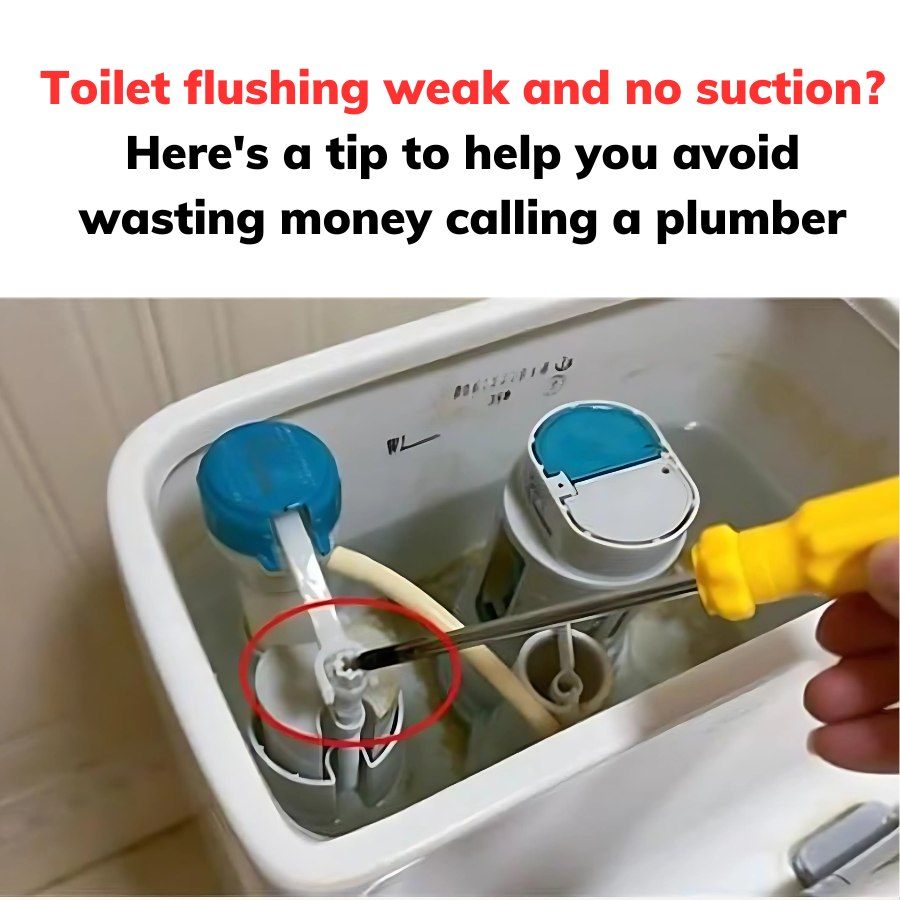ADVERTISEMENT
How to fix it:
- Use a small wire or toothpick to clear any visible clogs in the rim jets.
- You can also soak the rim holes with a vinegar solution. Pour vinegar into the toilet bowl, making sure it reaches the rim jets, and let it sit for a few hours. Then, scrub the jets with a brush to remove any build-up.
4. Clear the Toilet Trap
If the toilet bowl is sluggish or the flush is weak, there could be a partial clog in the toilet trap (the curved pipe that connects the bowl to the drain). A minor clog in the trap can prevent the toilet from flushing effectively.
How to fix it:
- First, try using a plunger to dislodge the clog. Make sure to create a proper seal around the drain and plunge vigorously.
- If the plunger doesn’t work, a toilet auger (or plumber’s snake) can be used to reach deeper into the trap and clear the obstruction. Insert the auger into the drain, turn the handle to break up the clog, and slowly pull the auger out.
5. Check for a Blocked Vent Pipe
Toilets rely on proper air pressure to create suction, and if the vent pipe (the pipe that extends from the toilet to the roof) is blocked, it can cause weak flushing or gurgling sounds. The vent pipe allows air to enter the plumbing system to maintain the right pressure for proper drainage.
How to fix it:
- A clogged vent pipe is often caused by debris like leaves, twigs, or even bird nests. If you’re comfortable with heights and have access to your roof, you can check the vent pipe yourself. Use a flashlight to look inside and remove any blockages.
- If you’re unable to clear the vent pipe on your own, it’s a good idea to call a professional plumber.
6. Examine the Toilet Flush Valve
The flush valve plays a crucial role in releasing water from the tank into the toilet bowl. If the flush valve isn’t working correctly, it can cause weak flushing or no suction at all.
How to fix it:
- Remove the tank lid and inspect the flush valve for any signs of wear or damage.
- If the valve seems corroded or broken, replacing it is the best option. To replace the flush valve, you’ll need to turn off the water supply, drain the tank, and disconnect the valve before installing a new one.
7. Consider the Toilet’s Age and Efficiency
Older toilets, particularly those manufactured before 1994, may not have the flushing power of modern, water-efficient models. Toilets made before this time often use more water per flush, but the design may not be optimized for efficient waste removal.
How to fix it:
- If your toilet is older, you may want to consider upgrading to a new, high-efficiency toilet. Many newer models are designed to use less water while still offering strong, effective flushes. Look for toilets with a flush rating of 1.28 gallons per flush (GPF) or lower for better water conservation without sacrificing performance.
8. Check the Supply Line for Blockages
The water supply line that connects your toilet to the home’s water system can sometimes get clogged or obstructed, causing weak flushing. If the flow of water is restricted, the flush won’t be as powerful.
How to fix it:
- Turn off the water supply and disconnect the hose from the tank. Check the hose and supply valve for any signs of clogs or debris.
- If there’s any visible obstruction, clear it out or replace the hose if needed.
9. Install a Toilet Flush Booster
If you’ve tried everything and your toilet is still flushing weakly, you might want to consider adding a toilet flush booster. These devices increase water pressure and can help provide more powerful flushes without needing to replace the entire toilet.
How to fix it:
- Toilet flush boosters are available at many home improvement stores and are designed to be easy to install. Follow the manufacturer’s instructions, and this could be a quick and effective solution to your weak flush problem.
Final Thoughts
A weak flush and lack of suction can be caused by several issues, but in most cases, there are simple solutions you can tackle yourself. Whether it’s a clogged vent pipe, a malfunctioning flapper valve, or mineral build-up in your toilet’s rim jets, addressing the root cause can improve your toilet’s flushing power. If these fixes don’t work, it may be time to consult a plumber to ensure there isn’t a more serious issue at hand. By keeping your toilet in top condition, you can say goodbye to weak flushing and hello to a more efficient, reliable toilet!
ADVERTISEMENT
